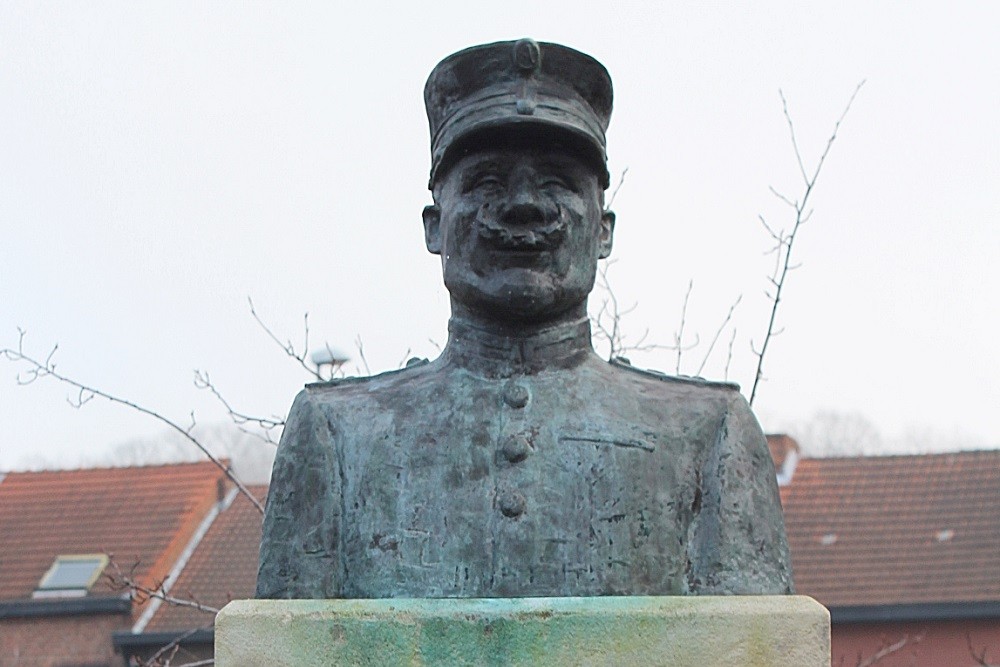Monument Captain Gilson Aarschot
On August 18, 1914, the Belgian army withdrew from the Getelinie to the fortress of Antwerp under pressure from the superior German troops. The 3rd Brigade mixed brigade, commanded by Major General Jansen, was to cover the retreat at Aarschot. Captain Gilson commanded the 4th Company of the First Battalion of the 9th Line Regiment. His men had taken up post along the railway berm between Lierse and Herseltsesteenweg. Despite heavy losses and an almost hopeless situation, on the morning of August 19 they managed to hold the Germans for 2 hours and the Belgian army was able to withdraw safely. Only when Paul Gilson and his men were surrounded by the enemy did he order the retreat. During this action he was wounded in the face. Around 7 o'clock in the morning the German 8th Infantry Brigade enters Aarschot.
But who was Captain Gilson?
Born in Ixelles in 1873, Georges Gilson, like his father, chooses a military career. At the age of 16, he volunteers and quickly pursues a career. At the outbreak of the war, he is captain commander of the 9th Line Regiment. Gilson was one of the few officers with combat experience. Between 1896 and 1908, he was active in the Force Publique of the Congo Free State. His further career progression in the First World War is remarkable. Barely recovered from his injuries in Aarschot, he takes part in the second failure from Fortress Antwerp. At the First Battle of the Yser, he leads some successful actions as commander. But in early 1915, he became ill with typhus and had to settle for a staff position behind the lines. After a few years he returns to the combat zone and in September 1918 he will repel a German attack with his battalion and capture enemy positions. He did not retire until 1931, after 42 years of service. He has then reached the rank of colonel.
About the monument
This statue was inaugurated on June 3, 1956.The bronze statue was made by artist Jan Van der Children. The city council then had one comment, "that the statue had to bear a kepie from before the 1914 war". This probably has to do with the fact that at the time that Captain Gilson fought in Aarschot, there was no mention of the famous steel Adrian helmet.
The square on which the statue stands was already named after him in 1950, upon Gilson's death.
Do you have more information about this location? Inform us!
Source
- Text: Jan Rymenams
- Photos: Jan Rymenams
Nearby
Museum
- Stedelijk Museum, Room "War and destruction" Aarschot - Aarschot
- Allied Forces Museum Herselt - Herselt
- House of the Franco-Belgian Resistance - Tielt-Winge
Point of interest
- Peace Carillon Aarschot - Aarschot
- Glass Window Church Of Our Lady Aarschot - Aarschot
- Grote Markt Aarschot - Aarschot
Monument
- Memorial Civilian Casualties WW1 Leenstraat Aarschot - Aarschot
- Memorials Station Aarschot - Aarschot
- Memorial Sint-Rochus Aarschot - Aarschot
Cemetery
- Grave Monument Pastor Dergent - Gelrode (Aarschot)
- Belgian War Graves Aarschot - Aarschot
- Belgian Graves Veterans Aarschot - Aarschot





